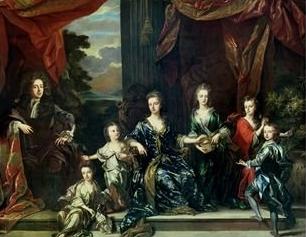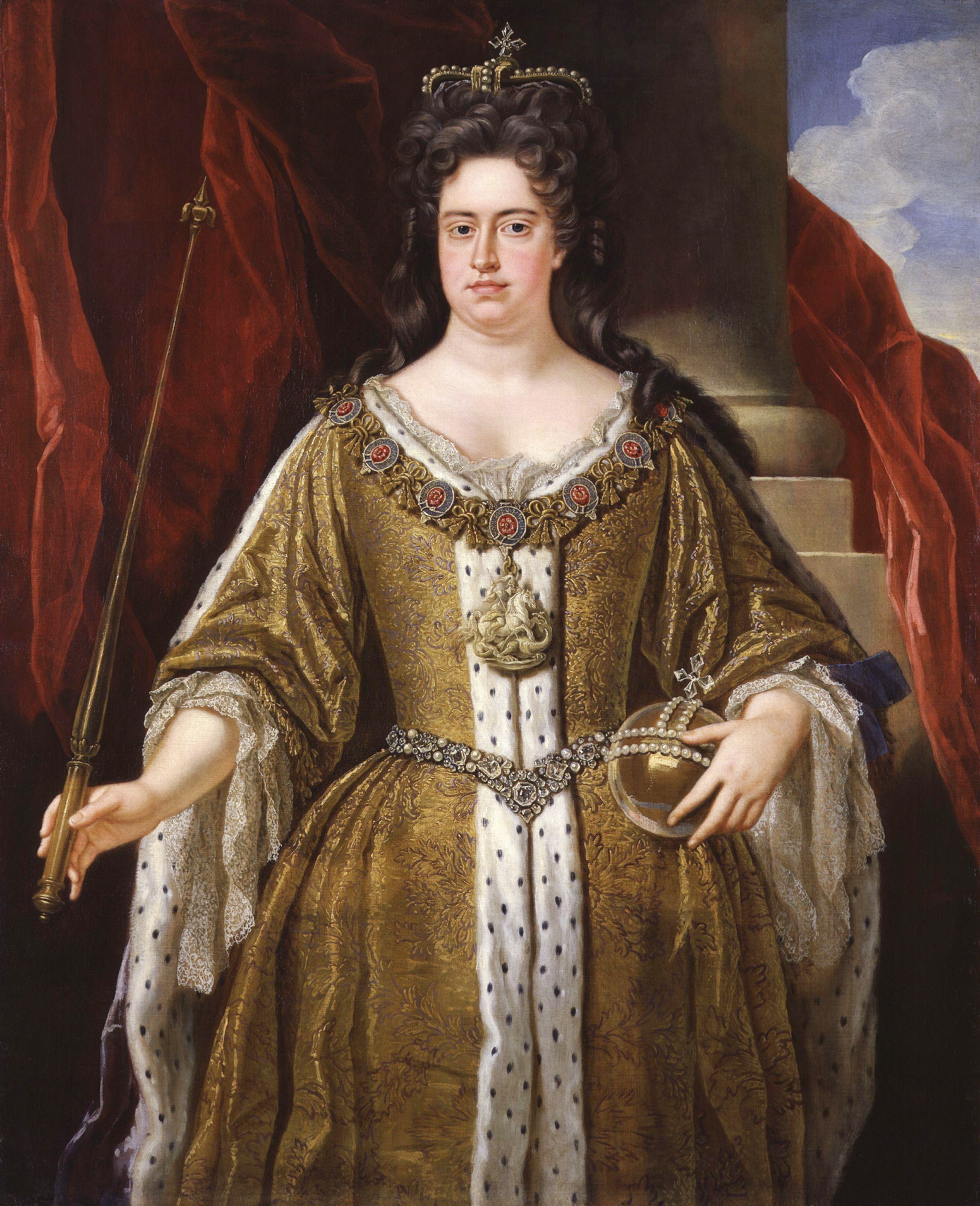John Closterman on:
[Wikipedia]
[Google]
[Amazon]
 John Closterman (also spelt Cloosterman, Klosterman; 1660 – 24 May 1711 (buried)) was a Westphalian portrait painter of the late 17th and early 18th centuries. His subjects were mostly European noblemen and their families.
John Closterman (also spelt Cloosterman, Klosterman; 1660 – 24 May 1711 (buried)) was a Westphalian portrait painter of the late 17th and early 18th centuries. His subjects were mostly European noblemen and their families.
in ''
 In 1702, Closterman painted a whole-length portrait of Anne, Queen of Great Britain in her coronation robes, wearing a crown, and carrying the orb and
In 1702, Closterman painted a whole-length portrait of Anne, Queen of Great Britain in her coronation robes, wearing a crown, and carrying the orb and
"John and John Baptist Closterman: some documents"
in '' The Burlington Magazine'', 106 (1964), 306–9
John and John Baptist Closterman: french website
{{DEFAULTSORT:Closterman, John 1660 births 1711 deaths 17th-century German painters German male painters 18th-century German painters 18th-century German male artists German portrait painters German emigrants to England Artists from Osnabrück
 John Closterman (also spelt Cloosterman, Klosterman; 1660 – 24 May 1711 (buried)) was a Westphalian portrait painter of the late 17th and early 18th centuries. His subjects were mostly European noblemen and their families.
John Closterman (also spelt Cloosterman, Klosterman; 1660 – 24 May 1711 (buried)) was a Westphalian portrait painter of the late 17th and early 18th centuries. His subjects were mostly European noblemen and their families.
Career
Born inOsnabrück
Osnabrück (; wep, Ossenbrügge; archaic ''Osnaburg'') is a city in the German state of Lower Saxony. It is situated on the river Hase in a valley penned between the Wiehen Hills and the northern tip of the Teutoburg Forest. With a population ...
in the Holy Roman Empire
The Holy Roman Empire was a political entity in Western, Central, and Southern Europe that developed during the Early Middle Ages and continued until its dissolution in 1806 during the Napoleonic Wars.
From the accession of Otto I in 962 ...
(now in Lower Saxony
Lower Saxony (german: Niedersachsen ; nds, Neddersassen; stq, Läichsaksen) is a German state (') in northwestern Germany. It is the second-largest state by land area, with , and fourth-largest in population (8 million in 2021) among the 16 ...
), Closterman was the son of an artist who taught him the rudiments of design.
In 1679, Closterman went to Paris and worked under François de Troy
François de Troy ( 28 February 1645 – 1 May 1730) was a French painter and engraver who became principal painter to King James II in exile at Saint-Germain-en-Laye and Director of the Académie Royale de peinture et de sculpture.
Early li ...
. In 1681, he went to England
England is a country that is part of the United Kingdom. It shares land borders with Wales to its west and Scotland to its north. The Irish Sea lies northwest and the Celtic Sea to the southwest. It is separated from continental Europe b ...
. He worked for John Riley, painting the draperies in Riley's portraits
When Riley died in 1691, Closterman finished several of his portraits. Because of his work on Riley's portraits, Charles Seymour, 6th Duke of Somerset
Charles Seymour, 6th Duke of Somerset (13 August 16622 December 1748), known by the epithet "The Proud Duke", was an English peer. He rebuilt Petworth House in Sussex, the ancient Percy seat inherited from his wife, in the palatial form which ...
, hired him to create some paintings. However, Somerset became dissatisfied with a portrait of the Italian painter Guercino that Closterman had painted for him, ending the relationship. Lord Halifax eventually purchased the portrait.
In 1696, Closterman was invited to the court of Spain, where he painted a portrait of Charles II of Spain
Charles II of Spain (''Spanish: Carlos II,'' 6 November 1661 – 1 November 1700), known as the Bewitched (''Spanish: El Hechizado''), was the last Habsburg ruler of the Spanish Empire. Best remembered for his physical disabilities and the War ...
, his wife, Mariana of Austria and some others. He also travelled to Italy
Italy ( it, Italia ), officially the Italian Republic, ) or the Republic of Italy, is a country in Southern Europe. It is located in the middle of the Mediterranean Sea, and its territory largely coincides with the homonymous geographical ...
twice, where he bought several artworks. When he returned to England, Closterman found a high demand for his services among the social elite.
At this time, he married an Englishwoman, Hannah; she died and was buried on 27 January 1702. According to Arnold Houbraken, Closterman later took a mistress who stole much of his property and then left him. Her departure allegedly precipitated Closterman's physical and mental decline. Jacob Campo Weyerman, who took much of his biographical material from Houbraken, states "Closterman had taken a beautiful mistress who, while he was away in the country, robbed him of his valuables and disappeared, actions which drove the painter into madness".'Closterman, John'in ''
Oxford Dictionary of National Biography
The ''Dictionary of National Biography'' (''DNB'') is a standard work of reference on notable figures from British history, published since 1885. The updated ''Oxford Dictionary of National Biography'' (''ODNB'') was published on 23 September ...
'', retrieved 11 September 2007
Closterman died in 1711 and was buried in Covent Garden churchyard in London.
Works
 In 1702, Closterman painted a whole-length portrait of Anne, Queen of Great Britain in her coronation robes, wearing a crown, and carrying the orb and
In 1702, Closterman painted a whole-length portrait of Anne, Queen of Great Britain in her coronation robes, wearing a crown, and carrying the orb and sceptre
A sceptre is a staff or wand held in the hand by a ruling monarch as an item of royal or imperial insignia. Figuratively, it means royal or imperial authority or sovereignty.
Antiquity
Ancient Egypt and Mesopotamia
The '' Was'' and other ...
. The Queen Anne portrait was originally exhibited in the Guildhall in London. The portrait has disappeared, but a study is part of the collection of the National Portrait Gallery in London.
Closterman also painted a family portrait of John Churchill, 1st Duke of Marlborough
General John Churchill, 1st Duke of Marlborough, 1st Prince of Mindelheim, 1st Count of Nellenburg, Prince of the Holy Roman Empire, (26 May 1650 – 16 June 1722 O.S.) was an English soldier and statesman whose career spanned the reign ...
and his wife, Sarah Churchill, Duchess of Marlborough, with their five children: John Churchill, Marquess of Blandford
John Churchill, Marquess of Blandford (13 February 1686 20 February 1703) (sometimes called Charles Churchill) was a British nobleman. He was the heir apparent to the Dukedom of Marlborough as the only surviving son of John Churchill, 1st Duke o ...
, Henrietta Godolphin, 2nd Duchess of Marlborough, Lady Ann, Lady Elizabeth, and Lady Mary Churchill.
In the Churchill portrait, the family is assembled beneath a rich hanging curtain on a raised dais; all the figures are lifesize. Closterman probably painted the portrait around the beginning of 1698. Closterman supposedly had so many disputes with Sarah Churchill that her husband remarked, "It has given me more trouble to reconcile my wife and you than to fight a battle". The story is told by Horace Walpole.
The Churchill portrait is now part of the collection at Blenheim Palace in Oxfordshire.
Identity
For many years John Closterman and his artist brother John Baptist Closterman have been conflated in biographies, such as those in the '' Dictionary of National Biography'' and the ''Encyclopedia Britannica
An encyclopedia (American English) or encyclopædia (British English) is a reference work or compendium providing summaries of knowledge either general or special to a particular field or discipline. Encyclopedias are divided into articl ...
''. An article by J. D. Stewart in '' The Burlington Magazine'' sets the record straight, citing John Closterman's will, which left part of his estate to "my Deare and Loveing Brother John Baptist".in '' The Burlington Magazine'', 106 (1964), 306–9
Notes
References
*External links
* *John and John Baptist Closterman: french website
{{DEFAULTSORT:Closterman, John 1660 births 1711 deaths 17th-century German painters German male painters 18th-century German painters 18th-century German male artists German portrait painters German emigrants to England Artists from Osnabrück